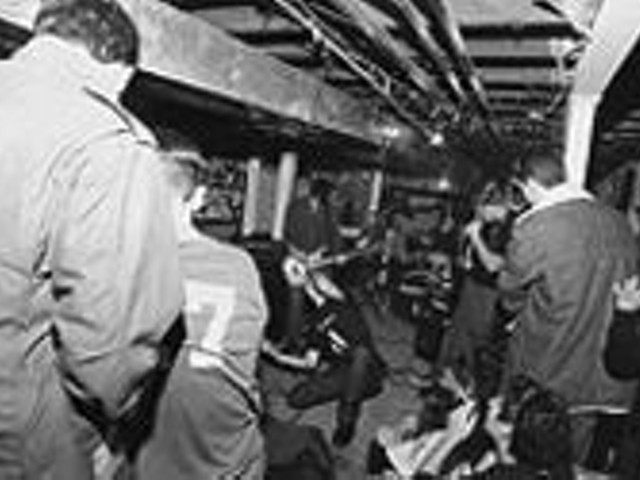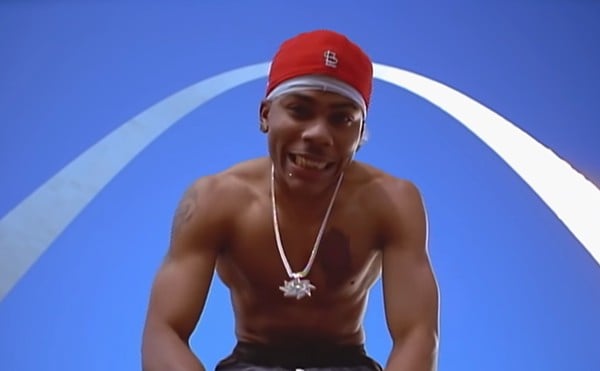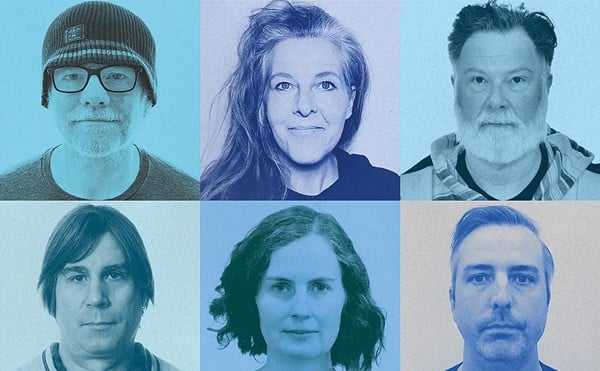Tim Rose's middle name might as well be Danger. While in Kiev, working as the creative director for an ad agency, the songwriter of Sun Sawed in 1/2 was "in my apartment playing the rhythm tracks for a friend of mine at work, and all of a sudden the doorbell rang. Being naive, I opened up the door, and it was militia." He takes a breath, recalling what could have been his last. "Only it wasn't really the militia," he continues. "They were Mafia guys in fake uniforms. They came into the apartment and demanded money, put guns to our heads, big knives to our stomachs. They made us sit on the bed and kept us there for an hour. Then, at the end, they screwed silencers onto the guns, turned off all the lights and cut the phone cord. They acted like they we going to shoot us." Rose pauses at the cliffhanger.
"They didn't, fortunately. My friend told them that I was from Chicago. And people are scared of Chicago over there. So they left." And so did Rose. "I got out of the country with the tracks in my hand, just barely."
After that incident literally threatened the completion of the Sun's new album, Bewilder Beest (a Monty Python reference), there were "a lot of near-death experiences that happened. Ken Kase had very severe pneumonia. I had my tonsils out while we were making this record, and my throat burst open. Blood was squirting everywhere. I had to run across the street to the hospital for emergency cauterization. When my brother and I were finishing the record, we almost got into a head-on collision, which I swerved away from at the last minute." Rose finds a mixed message in all this. "There were forces that didn't want this record to be made," he figures, "and there were forces that did -- not to get too spiritual or ridiculous or anything."
Spirits have always played a part in the Sun's career, though mainly the kind people consume in bars and fraternity houses. After years on the road, performing for beer-lubricated preppies and bewildered punks, Sun Sawed in 1/2 have parked themselves in the studio, where they intend to stay. And the whimsical, dynamic textures of Bewilder Beest (out in January) make their earlier albums sound like Bruce Springsteen's Nebraska. Offers Tim's brother Ken: "It sounds deceptively ornate with the instruments, when really there aren't very many instrumental parts; all the parts were worked out beforehand by the individual members. Aside from the Ukrainian contribution, there weren't many new parts that were worked out in the studio. We added some saxophone, little things here and there. But mostly it's the vocal arrangements that make it sound like there's a lot more instruments going on than there really are."
Bewilder Beest puts Sun Sawed in 1/2, at least, on a par with any number of groups that have had pop hits recently -- from Barenaked Ladies to Fastball. The paradigm for the new album, though, is the Pet Sounds and Sgt. Pepper era, when bands bathed their music in strings and echoes, employing orchestras to both augment and reflect their expanded concepts. But back then it was about making a "statement," turning the LSD experience into a catalyst for uncharted vistas. Bewilder Beest is simply about making the best album possible. And it deserves to chart.
Swathed in dazzling '60s-pop designs, Rose's songs are rockin' and ethereal, literate and catchy. From the clangy Byrds intro of "The Beholder and His Eye" to the sonorous "Eleanor Rigby" strings on "Memyself&eye," Sun Sawed in 1/2 finally sound whole. And their harmonies, filled out by Kase's singing and vocal arrangements, contain no holes whatsoever -- not even a tiny perforation. Just listen to "Denny's Girl Lounge," with its astonishing a cappella harmony passage. It's both redolent and worthy of E.L.O. or the Beach Boys. A touring band would have problems creating such a tour de force. And, as this album shows, the road-weary Sun Sawed in 1/2 had beautiful ideas that were all bottled up. On Bewilder Beest they're finally able to free the genie of their imagination.
The vocals, led as usual by the effusive, Bay City Roller-ready Doug Bobenhouse, have reached the level of choral epiphanies. "We've always admired bands with great harmonies," says Rose. "On the last two albums we tried to do harmonies but didn't have nearly the time -- or the genius of Ken Kase -- to come in and work out a seven-part harmony." Kase's sole composition, "Song No. 11," is haunting bipolar pop. It joins an Association-ish murk of dissolving harmonies with a chugging, high-strung verse. Kase's full deck of talents is a catalytic bridge for the band, lending them a winning hand with the arrangements and production.
Rose, however, would need more than a bridge to revisit the overseas musicians who played a part in Bewilder Beest. As his brother alluded, before Rose's close call in a faraway land, he managed to tape some multi-instrumentalists in Kiev. "I was working over there," explains Rose, "and I went to a restaurant called the Czar Village and heard these musicians playing traditional Ukrainian folk music, and I couldn't even eat, they were so good. They just blew me away. No one in the restaurant was paying any attention to them. So I had one of my friends, who spoke Russian, ask them if they'd be interested in being on the album. And these guys were from the hills; they didn't know pop music. They didn't even know who the Beatles were."
Rose says it didn't matter: "I was thinking of taking something I love and something they love, and throw it together. So I showed them my songs. They had no problem learning them. I was only able to take my acoustic guitar and hum things. The instruments they used were violin, stand-up bass, cello, Pan flutes and accordion. Most interesting was this instrument called the tscymbal -- like "cymbal' with a "ts' in front -- which was something completely different from anything we've ever seen before, like if you lifted the back of a grand piano and hit it with mallets." Rose was enchanted. "I had originally planned to do a whole album with them. And I'd found a vocalist from the Congo. She had this rich, rich voice and she was singing Beatles songs in a cowboy bar in Kiev. She didn't understand any English; she was singing phonetically. Well, I asked her to sing."
But instead of forming what might have been a world-music Blondie, Rose returned to his homeboys. "I kept e-mailing Doug and Ken Kase and my brother, and they said, "No, we really have to do a Sun album. We need to do another one.' I brought the tracks back to Matt Martin, our drummer, who played on top of it."
Eventually the band finished its masterpiece -- and all by themselves, save a little otherworldly luck. The Sun's last couple of albums were produced by Keith Olsen, who's worked with Fleetwood Mac, the Grateful Dead (on the wonderfully atypical Terrapin Station) and about every '70s superstar there ever was. This time, though, the band produced itself, putting the tricks learned from Olsen in their own magic hat. But Rose says there was no magic to replace the logistics: "Just pulling our collective butts back together from four corners of the world was a tough thing to do. We had to fly Matt up and back from the mountains. Matt moved up to the (Colorado) mountains to live in peace and harmony." It's fitting, because harmony is a big part of the Sun. And that's not the half of it. Despite the band's hook-crazed music, they aren't really valued in St. Louis, a town largely in love with cover bands.
In a sense the Sun are analogous to XTC, who could hardly pass for local celebrities in their native Swindon, England. And in the case of Sun Sawed in 1/2, there's another place, besides St. Louis, where they get no respect. Although Rose plans to move there, he reveals that "in Italy, they don't care much for rock & roll -- except Elvis. They don't have time for it. When we were playing in Italy -- when our group was there -- people would scratch their heads. So we'd launch into this sort of disco-synth thing. It was kind of like one of the programs on the synthesizer, like a test program. They loved it; they started dancing." To a man who's danced with death, it was a moment to cherish.





